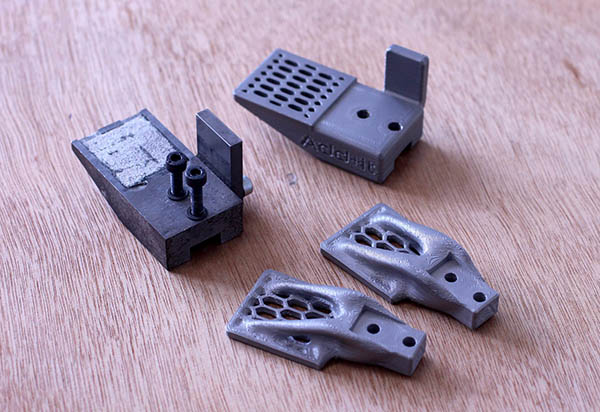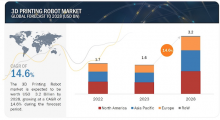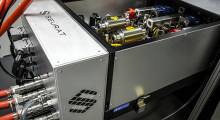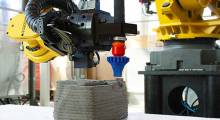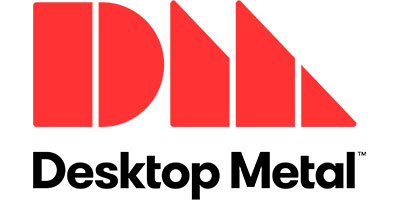A key part of digital manufacturing is the use of software and hardware that can be readily modified for flexible production. Preziosa Francesco SRL, a sheet metal manufacturer, wanted to create custom robotic grippers for each job. Conventional machining would take too long, so the Bergamo, Italy-based company turned to 3D printing with the help of Additive Italia SRL, Desktop Metal Inc., and nTopology Inc.
Preziosa Francesco realized that CNC machines would require long lead times to create new grippers for its existing robotic cell and automated press bending machine. The company worked with design engineers from Additive Italia (Add-it) to move part production in-house, and it used nTopology's software for topology optimization.
“A small part was reducing the value of the robot,” said Duann Scott, vice president of business development at nTopology. “By optimizing a small, inexpensive component, we helped unlock its full potential.”
nTopology complements CAD
“They came to us with the problem,” Scott told Robotics 24/7. “We'll give customers the application for a workflow, so they can test it for a few weeks, and then they can buy the software.”
nTopology claimed that its software is uniquely suited to 3D designs. “Existing design software was really built to digitize the drawing process. It was not there to make objects but to make drawings afterwards rather than drag and drop,” said Scott. “But with additive manufacturing, the approach has to be different. Most metal 3D printing machines are quite expensive, so to extract value, users really have to maximize their manufacturing of prototypes or spare parts.”
Preziosa Francesco was able to devise a design that reduced the weight of the grippers by 30% to 40%, maintained stiffness and grip force, and increased the robot's traction and agility, reducing collisions. Preziosa Francesco used Desktop Metal's Studio System and 17-4 PH stainless steel to 3D-print the perforated metal grippers.
“We perforated the material to make the gripper lighter and not impact-compliant,” said Scott. “With 3D-printing high-performance components, sometimes a small design change makes a critical difference.”
“nTopology can lightweight a component and change its material properties, making it absorb or transmit energy in a different way,” he explained. “This affects thermal dissipation, heat transfer, and rebound.”
The manufacturer was able to go from concept to application in four days in comparison with the two weeks it could have taken with computer-aided design (CAD). In addition, it reduced costs by 35% compared with outsourcing.
“We're not replacing traditional CAD software; we're augmenting workflows,” Scott said. “Nobody becomes a designer to design a jig. We make that process easier so they can get to sexier things with generative design like bird bones and spacecraft.”
Helping all customers
“Once Preziosa Francesco has this design, it serves as a recipe to change the gauge of the metal and the load,” Scott said. “Our customers can immediately update a design to match their processes. If they need 36 variants of an object, they can do it without having to make a change in the design tree, which is very time-consuming.”
nTopology takes the lessons from each customer and shares them in its “nTop Live” videos. “Last year, we put out like 100 nTop Live videos, all based on customer workflows,” said Scott. “We create a genericized version of a design and give the files away for free to anyone. “
“Our early customers were in additive manufacturing, but now they're also in CNC machines, stamping, and die casting,” he added. “We can describe applications in automotive, aerospace, or medical manufacturing.”
“We're also talking about making things like hinges for metal cabinets,” Scott said. “A small printed part can make it viable for businesses to have 24/7 processes. Designing and printing a jet engine takes four years; Preziosa Francesco took four days.”
Visualization and markets accelerate
Global manufacturing slowed in 2020 largely because of a decline in automotive sales early in the COVID-19 pandemic. However, some changes in demand helped nTopology, noted Scott.
“Last year was an outlier, as machine sales in manufacturing dropped with supply chain problems and budget allocation fears,” he recalled. “But we didn't see slowdowns in design software. In the first quarter of 2020, we sold more licenses than we ever had before, and sales have grown continuously into 2021.”
“One aspect of last year was that with a lot of engineers working from home, they had more time to learn new software,” he said. “nTopology is a new tool to solve their problems.”
In April, nTopology introduced Version 3.0 of its software, including GPU (graphics processing unit) acceleration for geometry visualization and modification.
“What used to take eight hours with a CPU now takes 10 seconds with a GPU—we're not just designing but are also iterating in real-time,” Scott said. “Rethinking geometry is more intuitive than putting numbers into an equation. We're at a unique place, combining automation with simulation and manufacturing processes.”
The company is growing and looking at more use cases for its technology. “We have a lot of potential to expand,” Scott said. “We've grown from 70 people last year to 100 staffers now and are hiring engineers.”
“nTopology is starting with lattice structures, and now maching, milling, and casting,” he added. “There is a lot of interest in combining additive manufacturing with casting and foundries using our technology to improve efficiency and lead times.”
nTopology is also looking for more partners and plans to expand its operations in Europe and Asia.
About the Author
Follow Robotics 24/7 on Linkedin
Article topics
Email Sign Up

